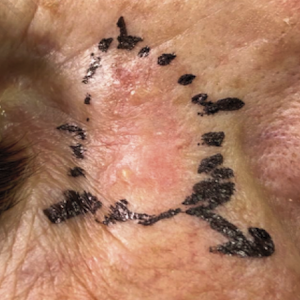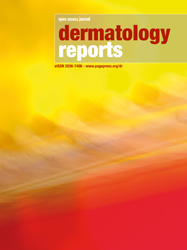Mohs micrographic surgery: the experience of the Dermatology Unit of the University of Milan confirms the superiority over traditional surgery in high-risk non-melanoma skin cancers

All claims expressed in this article are solely those of the authors and do not necessarily represent those of their affiliated organizations, or those of the publisher, the editors and the reviewers. Any product that may be evaluated in this article or claim that may be made by its manufacturer is not guaranteed or endorsed by the publisher.
Authors
The constant increase in the incidence of non-melanoma skin cancers (NMSC) makes their treatment a topic of paramount interest. Because most NMSC tend to develop in visible areas such as the head-neck area, it is a priority to choose the less destructive therapy and more appropriate reconstructive technique. Mohs Micrographic Surgery (MMS) represents the treatment of choice for skin tumors in critical sites, recurrent tumors and tumors with aggressive histologic features. We collected patients affected by NMSC who underwent MMS at the Dermatology Unit of IRCCS Fondazione Ca' Granda, Milan, in the period March 2017-December 2021. One hundred and fifty-nine patients were enrolled in this retrospective observational study. The excision margins were chosen based on a dermoscopic evaluation. The main histological diagnoses were basal cell carcinoma (145, 91.2%) and squamous cell carcinoma (10, 6.3%), in areas with high functional or anatomical value. 121 out of 159 surgeries did not require further enlargement after the removal of the clinically and dermoscopically visible lesion, but in 38 cases (23.9% of cases) the pathologist required at least one subsequent enlargement, due to the persistence of neoplasm at the bottom or at the margins of the lesion. Only one recurrence has been reported so far. MMS is a pathology-controlled surgery with high intrinsic value because of the low risk of recurrences and should be routinely adopted for high-risk NMSC.
How to Cite

This work is licensed under a Creative Commons Attribution-NonCommercial 4.0 International License.








